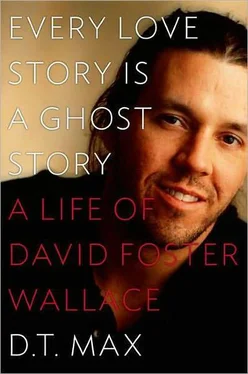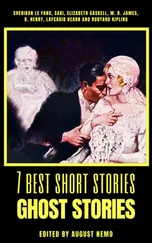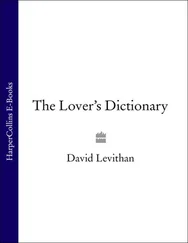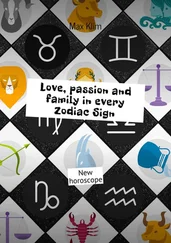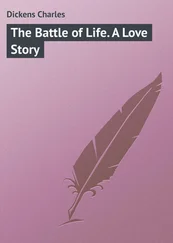I want to express my appreciation to James Atlas, Patricia Bosworth, Anne Fadiman, Frances Kiernan, Brad Morrow, and Lee Siegel, all special friends and supporters in the creation of this work.
Some old friends who helped in new ways: To Alissa Land, who took a road trip with me to what was Granada House in Brighton and endured the rigors of literary research, and to Bryan Simmons, who helped peel back the mystery from David’s brief stint as a security guard at Lotus Development — my thanks. To Shelley and Eames Demetrios, also thanks, for letting me stay in Guthrie’s room. Guthrie, thanks!
To the Montclair Public Library, where I did much of this work, partly in their wonderful Terra Tea & Fair Trade cafe, and to Panera’s on Bloomfield Avenue and the Chamagudao tea shop (now closed), where I did the rest — thank you for providing a quiet place to think about David and his work and to eat pastries.
To my in-laws, Diana Shahmoon and Charles Blustain, for more pastries and good comments. To my brothers, Eric and Adam, and their wives, Diane and Denise, yes, more baked goods. And concluding in this vein, if less probably, to Katherine Neuman of Cafe Lula, who gave me a whole apple pie (proprietor Jason Hammel, see above).
And finally to my wife, Sarah, who was pushed off the dedication page by our children and who otherwise would be there, again.
Chapter 1: “Call Me Dave”
1. Amy Wallace says that she never met “anybody who had the need for television David had.”
2. Wallace claimed that as an eleven-year-old he traded lawn mowing with a neighbor for a tutorial on Stendhal’s Le Rouge et le Noir . The improbable exchange is echoed in Infinite Jest where Hal Incandenza offers free mowing to an “oral lyrologist” in return for information on the history of the instrument.
3. In his first published story, “The Planet Trillaphon as It Stands in Relation to the Bad Thing,” the protagonist says of his depression, “Some people say it’s like having always before you and under you a huge black hole without a bottom, a black, black hole, maybe with vague teeth in it, and then your being part of the hole.”
Chapter 2: “The Real ‘Waller’”
1. The three roommates also heard the other students in the hall bathroom. Wallace said he could recognize the sounds of different people in the stalls and years later made use of these memories in a story told by the son of a men’s room attendant, “Brief Interview #42.”
2. This story was mythologized at Amherst in later years such that Wallace so flummoxed a professor with his superior intelligence that the professor snapped shut his briefcase and left the class in the middle of a lesson.
3. In Senior Rhetoric, for instance, Wallace wrote a story about a man who kills his own clone by pushing him out a window. The tale played off of the Frankenstein myth and ended with a pun, the creator arrested for “making an illegal clone fall.” The teacher told him she was disappointed in the ending but gave him an A-plus.
4. A hint as to other stories Wallace may have been working on at the time is provided in a conversation between two characters at a publishing house in The Broom of the System , Wallace’s college novel, who are looking through a pile of unsolicited manuscripts for the publisher’s quarterly. The stories discussed are “The Enema Bandit and the Cosmic Buzzer,” which may be a version of “The Clang Birds,” as well as “Dance of the Insecure,” “To the Mall,” “Threnody Jones and the Goat from Below,” “Love” (itself a part of Broom ), and “A Metamorphosis for the Eighties.” Comments one character, “That last one is actually rather interesting. A Kafka parody, though sensitively done. Self-loathing-in-the-midst-of-Adulation piece. Collegiate but interesting.”
5. Wallace’s parodies sometimes offended. A piece he wrote about cosseted students at antebellum Amherst arriving with their slaves drew a protest from the Black Student Union.
6. Another philosophical book of the era, Gödel, Escher, Bach , by Douglas Hofstadter, impressed Wallace a great deal. Subtitled “an eternal golden braid,” the book investigates consciousness, logic, language, and the structures of meaning. Wallace borrowed his father’s copy and “actually shoved this book excitedly at people in the eighties,” as he remembered in an interview in The Believer. Gödel is a predecessor to Infinite Jest , at least structurally. Mark Costello remembers Wallace when he was working on his novel “going on about the ‘braid’ or ‘fugue’ shape — disparate elements making a whole.”
7. That “every love story is a ghost story” is a thought that stayed with Wallace from the beginning of his writing career to the end. The phrase appears in a letter he wrote in the graduate program at the University of Arizona, and he is still turning it over in his mind twenty years later when he slips it into a scene in which IRS examiners silently turn pages in The Pale King . From “Planet Trillaphon” to the posthumous The Pale King , moments of happy love in Wallace’s work are rare.
8. That human connections can heal would become the centerpiece of Wallace’s mature credo. As he would write one day in Infinite Jest , “The truth will set you free — but not until it’s done with you.”
9. Wallace never republished “Planet Trillaphon” in a collection, probably because it was too revealing. Also, by the time he had sufficient other short fiction for a collection, after publishing The Broom of the System , the conventionality of the narrative would have seemed amateurish to him.
10. The other students were entranced by Wallace’s recitation of the Underground Man’s monologue in the class.
11. The other opening sentence that Wallace considered of surpassing beauty is (slightly misquoted) from a Stephen Crane story, “The Open Boat.” It sounds a similarly unsettled note: “None of the men knew the color of the sky.”
12. Wallace claimed Lenore’s great-grandmother was loosely inspired by a real Wittgenstein disciple, Alice Ambrose, who lived near Amherst. His knowledge of nursing homes come from a stint working in one in high school.
13. Wallace once wrote Jonathan Franzen he was glad everyone focused on his debt in Broom of the System to Pynchon, because it meant they didn’t see how much he had taken from DeLillo.
14. I owe this observation to Marshall Boswell, in his book Understanding David Foster Wallace .
15. Reading his former roommate’s manuscript in the spring of 1985, Mark Costello noticed that Lenore seemed like an idealized projection of Amy Wallace, especially in her manner of speech—“the dry wit and the tendency to repeat in less inflated terms what someone has said to her.”
Chapter 3: “Westward!”
1. He wrote on his Iowa application that he had also applied to the Johns Hopkins MFA program, where the postmodernist John Barth taught. Unfortunately, the school has no record of an application. If Wallace was rejected, it would lend a more personal slant to his later intense antagonism toward the writer.
2. Containers of waste appear regularly over the years in Wallace’s writing and reach an acme in Infinite Jest . Most critics would trace the leitmotif to his affection for Pynchon, for whom waste was also a central symbol, but personal exposure certainly played a role.
3. This fascination with spiders would appear in Infinite Jest , where the three Incandenza generations that precede Hal fear them. For instance, Hal’s great-grandfather refuses to stand under palm trees out of concern they will drop on his head. And the ferocity of the female may have played a part in the portrait of Avril Incandenza, Hal’s mother, a venomous widow herself.
Читать дальше
